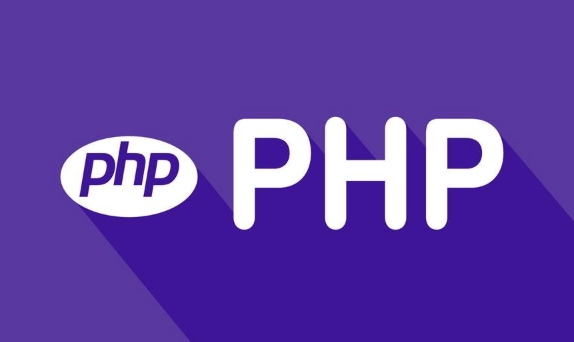How to handle File Uploads securely in PHP?
Jul 08, 2025 am 02:37 AMTo safely handle PHP file uploads, you need to verify the source and type, control the file name and path, set server restrictions, and process media files twice. 1. Verify the upload source to prevent CSRF through token and detect the real MIME type through finfo_file using whitelist control; 2. Rename the file to a random string and determine the extension to store it in a non-Web directory according to the detection type; 3. PHP configuration limits the upload size and temporary directory Nginx/Apache prohibits access to the upload directory; 4. The GD library resaves the pictures to clear potential malicious data.

Uploading files is a common feature in many PHP applications, but if handled accidentally, it can easily bring security risks. The most direct problem is: the files uploaded by users may contain malicious code. Therefore, the core of ensuring file upload security lies in verification, restriction and isolation .

The following is based on several actual scenarios and talk about how to safely handle file uploads in PHP.
1. Verify the upload source and file type
First, make sure that the upload request is indeed from your own form, not a request made by others. You can prevent CSRF attacks by checking $_SERVER['HTTP_REFERER'] (although not entirely reliable), or using a one-time token.

Secondly, don't just rely on the client to judge the file type . The MIME type is provided when the browser uploads, but this can be faked. PHP provides mime_content_type() or finfo_file() functions to read the real file type:
$finfo = finfo_open(FILEINFO_MIME_TYPE); $mime = finfo_file($finfo, $_FILES['file']['tmp_name']);
It is recommended that whitelist control allowable types, such as:

- Image category:
image/jpeg,image/png - Document class:
application/pdf, etc.
The blacklisting method is prone to missing new attack methods and is not recommended.
2. Control file name and storage path
Do not use the file names uploaded by users directly, because there may be special characters or hidden structures, such as .php files that are masquerading as pictures.
The method is very simple:
- Rename the file to a random string, such as
md5(uniqid()) . '.jpg' - Don't trust the original file extension, determine the suffix by the real type of detection
In addition, do not place the upload directory under the Web access path . For example, save the file in /var/www/uploads/ instead of in uploads/ directory in the website root directory, so that even if the executable script is uploaded, it cannot be directly accessed and run.
3. Set security restrictions for server and PHP
PHP comes with some upload-related configuration items, set in php.ini :
-
upload_max_filesizeandpost_max_size: Control the maximum upload size -
file_uploads: Whether to allow uploading -
upload_tmp_dir: Temporary directory, preferably set to a non-Web path
The Apache/Nginx level can also be restricted, such as Nginx:
location /uploads/ {
deny all;
}This prevents users from directly accessing content in the uploaded directory.
You can also consider adding .htaccess (Apache) to the upload directory to prohibit script execution:
Options -ExecCGI -Indexes AddHandler cgi-script .php .php3 .pl .py .jsp .asp
4. Secondary processing of media files such as pictures
If your app accepts image uploads, an additional security measure is to re-"process" these images:
- Open the image with GD or Imagick and save it again
- This can clear away malicious data embedded in the picture (such as scripts carried by EXIF ??information)
Sample code snippet:
$image = imagecreatefromjpeg($_FILES['file']['tmp_name']); imagejpeg($image, 'new_image.jpg'); imagedestroy($image);
Although all attacks cannot be completely eliminated, they can effectively improve security.
Basically that's it. The key point is still the same old saying: Never trust user input . Although the upload function is common, it will become a backdoor entry if you are not careful. Only by doing a good job of verification, restricting permissions, and isolating the environment can you truly reduce risks.
The above is the detailed content of How to handle File Uploads securely in PHP?. For more information, please follow other related articles on the PHP Chinese website!

Hot AI Tools

Undress AI Tool
Undress images for free

Undresser.AI Undress
AI-powered app for creating realistic nude photos

AI Clothes Remover
Online AI tool for removing clothes from photos.

Clothoff.io
AI clothes remover

Video Face Swap
Swap faces in any video effortlessly with our completely free AI face swap tool!

Hot Article

Hot Tools

Notepad++7.3.1
Easy-to-use and free code editor

SublimeText3 Chinese version
Chinese version, very easy to use

Zend Studio 13.0.1
Powerful PHP integrated development environment

Dreamweaver CS6
Visual web development tools

SublimeText3 Mac version
God-level code editing software (SublimeText3)

Hot Topics
 What is PHP, and why is it used for web development?
Jun 23, 2025 am 12:55 AM
What is PHP, and why is it used for web development?
Jun 23, 2025 am 12:55 AM
PHPbecamepopularforwebdevelopmentduetoitseaseoflearning,seamlessintegrationwithHTML,widespreadhostingsupport,andalargeecosystemincludingframeworkslikeLaravelandCMSplatformslikeWordPress.Itexcelsinhandlingformsubmissions,managingusersessions,interacti
 How do I stay up-to-date with the latest PHP developments and best practices?
Jun 23, 2025 am 12:56 AM
How do I stay up-to-date with the latest PHP developments and best practices?
Jun 23, 2025 am 12:56 AM
TostaycurrentwithPHPdevelopmentsandbestpractices,followkeynewssourceslikePHP.netandPHPWeekly,engagewithcommunitiesonforumsandconferences,keeptoolingupdatedandgraduallyadoptnewfeatures,andreadorcontributetoopensourceprojects.First,followreliablesource
 How to set PHP time zone?
Jun 25, 2025 am 01:00 AM
How to set PHP time zone?
Jun 25, 2025 am 01:00 AM
TosettherighttimezoneinPHP,usedate_default_timezone_set()functionatthestartofyourscriptwithavalididentifiersuchas'America/New_York'.1.Usedate_default_timezone_set()beforeanydate/timefunctions.2.Alternatively,configurethephp.inifilebysettingdate.timez
 How do I validate user input in PHP to ensure it meets certain criteria?
Jun 22, 2025 am 01:00 AM
How do I validate user input in PHP to ensure it meets certain criteria?
Jun 22, 2025 am 01:00 AM
TovalidateuserinputinPHP,usebuilt-invalidationfunctionslikefilter_var()andfilter_input(),applyregularexpressionsforcustomformatssuchasusernamesorphonenumbers,checkdatatypesfornumericvalueslikeageorprice,setlengthlimitsandtrimwhitespacetopreventlayout
 What is data serialization in PHP (serialize(), unserialize())?
Jun 22, 2025 am 01:03 AM
What is data serialization in PHP (serialize(), unserialize())?
Jun 22, 2025 am 01:03 AM
ThePhpfunctionSerialize () andunserialize () AreusedtoconvertcomplexdaTastructdestoresintostoraSandaBackagain.1.Serialize () c OnvertsdatalikecarraysorobjectsraystringcontainingTypeandstructureinformation.2.unserialize () Reconstruct theoriginalatataprom
 How do I embed PHP code in an HTML file?
Jun 22, 2025 am 01:00 AM
How do I embed PHP code in an HTML file?
Jun 22, 2025 am 01:00 AM
You can embed PHP code into HTML files, but make sure that the file has an extension of .php so that the server can parse it correctly. Use standard tags to wrap PHP code, insert dynamic content anywhere in HTML. In addition, you can switch PHP and HTML multiple times in the same file to realize dynamic functions such as conditional rendering. Be sure to pay attention to the server configuration and syntax correctness to avoid problems caused by short labels, quotation mark errors or omitted end labels.
 What are the best practices for writing clean and maintainable PHP code?
Jun 24, 2025 am 12:53 AM
What are the best practices for writing clean and maintainable PHP code?
Jun 24, 2025 am 12:53 AM
The key to writing clean and easy-to-maintain PHP code lies in clear naming, following standards, reasonable structure, making good use of comments and testability. 1. Use clear variables, functions and class names, such as $userData and calculateTotalPrice(); 2. Follow the PSR-12 standard unified code style; 3. Split the code structure according to responsibilities, and organize it using MVC or Laravel-style catalogs; 4. Avoid noodles-style code and split the logic into small functions with a single responsibility; 5. Add comments at key points and write interface documents to clarify parameters, return values ??and exceptions; 6. Improve testability, adopt dependency injection, reduce global state and static methods. These practices improve code quality, collaboration efficiency and post-maintenance ease.
 How do I execute SQL queries using PHP?
Jun 24, 2025 am 12:54 AM
How do I execute SQL queries using PHP?
Jun 24, 2025 am 12:54 AM
Yes,youcanrunSQLqueriesusingPHP,andtheprocessinvolveschoosingadatabaseextension,connectingtothedatabase,executingqueriessafely,andclosingconnectionswhendone.Todothis,firstchoosebetweenMySQLiorPDO,withPDObeingmoreflexibleduetosupportingmultipledatabas






